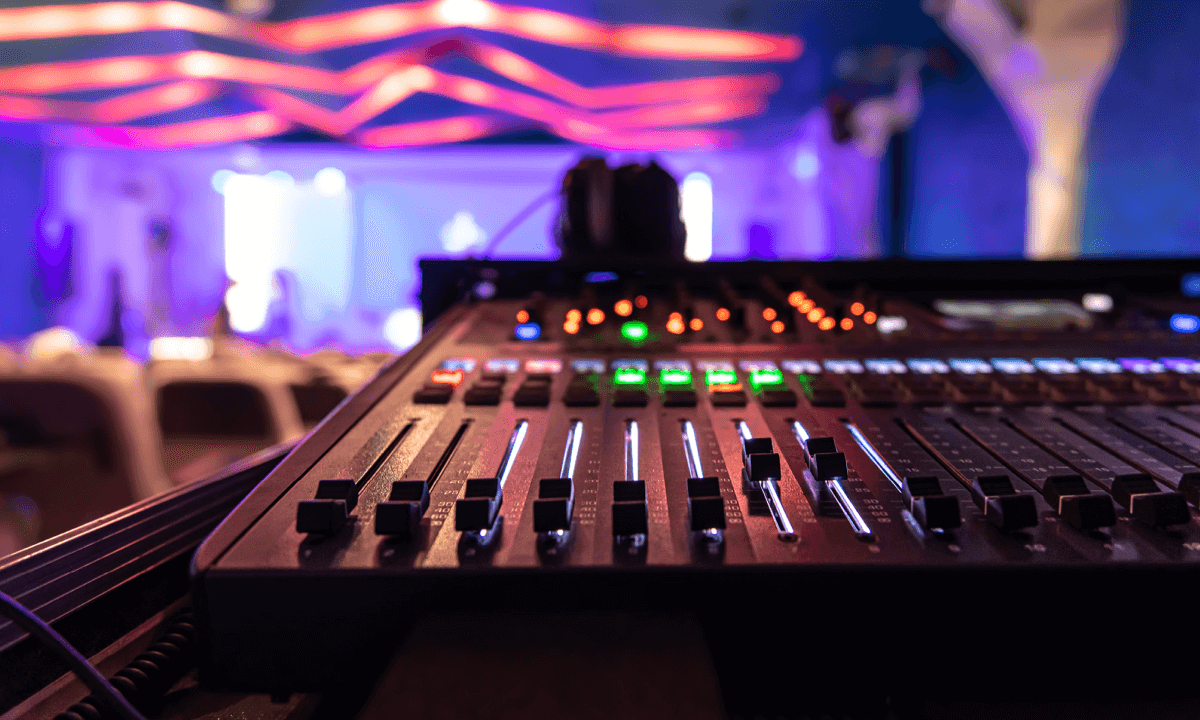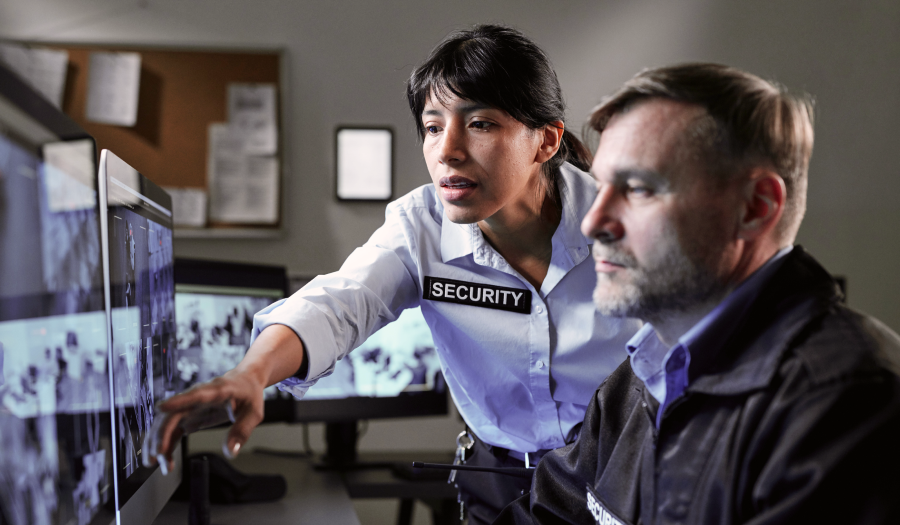What are audio-visuals and how do they enhance events?

Events should be memorable. Sights and sounds are all a part of the show and can make your event a standout experience. That’s why selecting the right audio-visual solutions, services, and equipment is essential.
To create a showstopping event, you need to understand what audio-visuals are and they can take the experience to new heights.
What is audio-visual (AV)?
Audio-visual (AV) is a combination of audio and visual experiences used to communicate information. It relies on having the right equipment to produce sounds and visual experiences that ignite the senses.
Audio equipment could include speakers and microphones used to play music, speech, and sound effects. Visual technology includes digital screens, lighting, video conferencing, and presentation systems that display visual content.
The two are often used together to set the mood in movies, TV shows, and video games. They’re also relied upon heavily at events and conferences to provide entertainment, enhance storytelling, convey information, and foster collaboration.
What AV stands for in an event setting:
AV stands for audio-visual in event settings. It’s the combination of sounds, lights, and visuals that are used to increase audience engagement and bring an event to life.
Why audio-visual equipment is essential for events:
Audio-visual equipment facilitates communication with large groups, making it the heartbeat of every event. It enhances the quality of presentations, engages the audience, and creates a lasting impression.
Without an audio-visual set-up, attendees might not be able to hear presentations. Speakers might also struggle to visually engage their audience. If you were running a hybrid event, in-person and online guests wouldn’t be able to see and hear the experience simultaneously. And without digital signage, guests might struggle to navigate your event and miss out on experiences.
Selecting the best audio-visual event solutions for your event:
Once you have an idea of the type of experience you would like to create throughout your event and an agenda, you can start gathering the audio-visual equipment you need.
Lighting
Lighting is one of the best ways to set the mood for your event. Think about what type of atmosphere you want to create and how well-lit various areas of your setting need to be to enhance visibility. Light installations or art shows can also add visual interest to your event.
Cameras
Cameras are vital for capturing your event and broadcasting important moments onto larger presentation screens. They can also be used to capture the live experience and stream it to people who are online. Think about what visual content you would like to produce at your event and make sure you have the right photographic and videography equipment to capture it.
Virtual reality
Virtual reality (VR) is the creation of an artificial environment through digital information. For example, you might use virtual reality goggles to take your presentation audience through a tour of your display while they’re sitting in their seats.
Augmented reality
Augmented reality (AR) integrates digital information with people’s physical environment in real time. For example, you could augment specific trade show areas with additional information about your major sponsors, shown alongside immersive demonstrations.
Projection mapping
Projection mapping involves casting light to project images or videos onto objects. It creates a unique visual experience and is often used in industrial settings, theatres, or buildings.
Live Streaming
Live streaming equipment enables you to capture and stream an event over the internet as it’s happening. It’s a great way to connect people attending the event in person and virtually. An event management platform like EventsAir can also help you integrate presentations with onsite audio-visual production teams via Real-Time Messaging Protocol (RTMP) giving you total flexibility in remote content delivery.
Video conferencing
Video conferencing allows people to participate in your event from anywhere with an internet connection. It helps your guests join in the event and engage with others through a combination of video and audio.
Interactive displays
Interactive displays respond to prompts from their environment. You could give event guests the ability to access information or entertainment by interacting with their interface through touch, motion, or voice instructions.
Holograms
Holograms are an emerging technology that allows people or characters to attend your event without physically being there. They are expensive since they are a new technology, but a 3D projected image with a life-like appearance could be a great way for you to engage attendees.
Advanced digital displays
High-resolution, 4K displays are on the rise. They are great for events that rely heavily on visual presentations and graphics. EventsAir also enables you to create an EventsStream, an exclusive social media experience for your guests that can be projected to walls or digital displays. Digital displays can also be used to facilitate games, live polling, and Q&As during your events.
Audio-visual control systems
An audio-visual control system centralizes the control and management of all your equipment. It allows your audio-visual team to orchestrate the entire show from one interface. For example, AirCast Studio is the audio-visual control system from EventsAir that allows hosts and producers to control all their equipment from anywhere in the world.
What event audio-visual service should I select?
Getting your audio-visual experience right relies on technical expertise and a touch of creativity. If you’re an event planner or organizer, you’ll likely need to work with audio-visual technicians and engineers to bring your vision to life.
Before selecting your audio-visual services, make sure you’ve given the team a detailed brief and asked the right questions.
Your brief should outline the details and specifics of your event. Give them a good understanding of what your presenters need to communicate and their audio-visual requirements. You also need to provide an outline of logistics, such as event timings, rooms, and locations.
Selecting the right audio-visual supplier also involves asking the right questions:
- What services do they offer and will they meet your requirements?
- Do they recommend any other audio-visual technologies that you haven’t considered?
- How long do they need to set up?
- What information do they need about your presenters?
- What budget will they need to complete the job?
- How many team members will be assisting?
- What safety considerations need to be made for the audio-visual set-up?
How to collaborate with your audio-visual suppliers
You can use technology to communicate with your audio-visual suppliers. For example, EventsAir has audio-visual technician and presenter prep-room apps that can be used to communicate and confirm requirements in the lead-up to the event.
You could also link them to the EventsAir Organizer App which is a powerful, cloud-based tool that organizes your team. This would allow them to easily keep up with the agenda, access run sheets, and communicate with your staff.
Planning your audio-visual vision
A great event audio-visual experience takes careful planning, a lot of communication, and plenty of preparation. Tapping into the best audio-visual technology and specialists can make your event more engaging, memorable, and shareable.
At EventsAir, we understand the importance of selecting the right event technology partner – someone who can bring your AV dreams to life. We’ve been innovating in the events industry for more than 30 years, and events are at the core of our DNA.
If you would like to understand how we can help you unleash the power of event planning technology for your team, then schedule a demo with one of our team members today.



